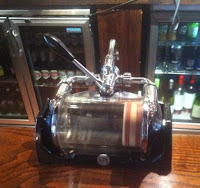An Ankoù
Well-Known Member
It's all getting a bit confusing, especially when the likes of White Labs are now providing some of their classic liquid yeasts as dry yeasts. It makes you wonder if the liquid yeast thing wasn't just a marketing niche after all- apart from the greater variety, of course. I hear great things about Brewlabs' slopes, though and I must try and get hold of some.I've thought the same but I've read other statements from people who've tried the yeasts. At least, I've read that for bond.
Don't get me wrong, I'm not convinced either, that's why I'm asking for more opinions.
As for dry yeast: I read somewhere that once a dry yeast is harvested and repitched it is effectively a liquid yeast anyway.



















































![Craft A Brew - Safale S-04 Dry Yeast - Fermentis - English Ale Dry Yeast - For English and American Ales and Hard Apple Ciders - Ingredients for Home Brewing - Beer Making Supplies - [1 Pack]](https://m.media-amazon.com/images/I/41fVGNh6JfL._SL500_.jpg)









